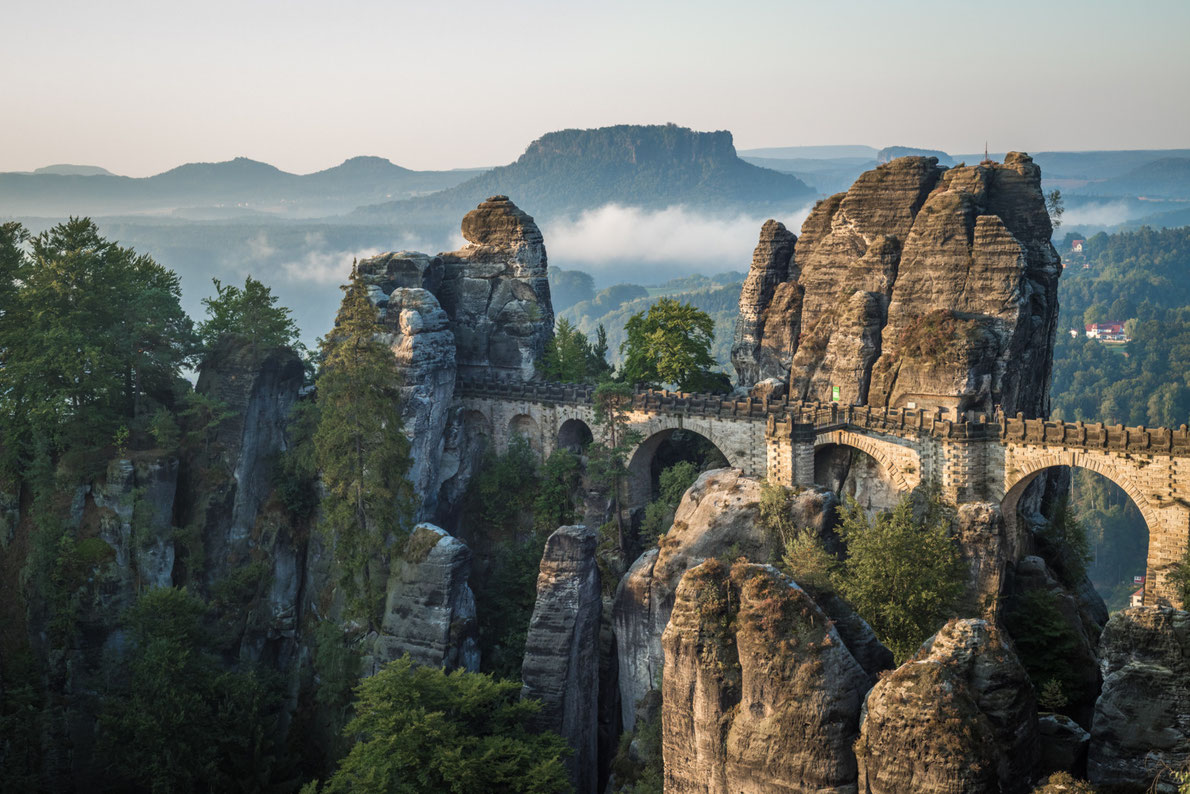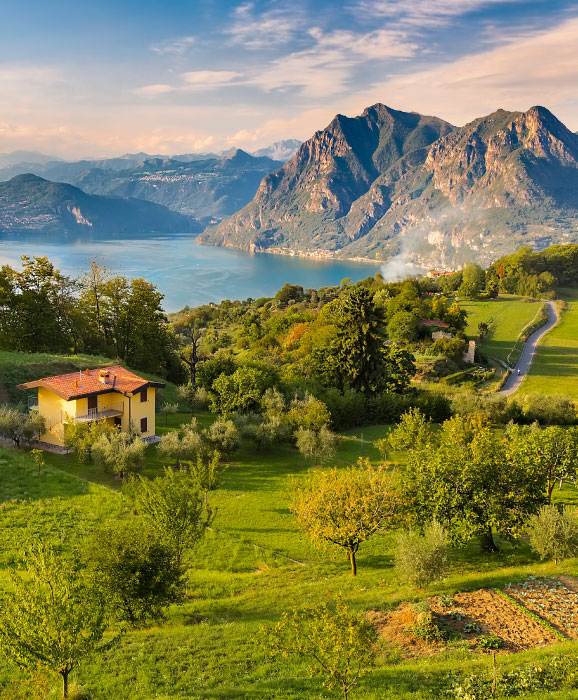Best national parks in Europe
that are as green as beautiful
You love nature, forests, lakes, flora and fauna? Discover the most beautiful national parks in Europe. Forget the crowd, forget the beaches, forget cities and shopping, and come to relax in the best national parks in Europe.
Discover incredible national parks such as Plitvice Lakes in Croatia, The Saxon Switzerland National Park, Belluno Dolomites National Park and the Goreme National Park.
Book your hotel, guesthouse, B&B, campsite, apartment at the best price guaranteed and discover the best sites for nature lovers. There is so much to discover in Europe.

1. Plitvice Lakes
Croatia
The Plitvice lakes National Park belongs to Dinaric karst area and due to its specific geology, geomorphology and hydrology it truly is one of the most impressive karst entities in the world. Apart from dolomitic rock, mesosoic limestones with dolomite inserts are predominant here. The ratio between less porous or water-retaining dolomites and porous Jurassic limestone sediments in the karst has influenced the landscape of the overall area today. Specific hydrology properties of rock have enabled water retention on Triassic dolomite rocks, as well as canyon formation by water cutting through Cretaceous limestone deposits. Tufa barriers are a phenomenon enabling water to remain inside the lakes. (©np-plitvicka-jezera.hr).

2. Saxon Switzerland
Germany
The Saxon Switzerland National Park (German: Nationalpark Sächsische Schweiz), is a National Park in the German Free State of Saxony near the capital city of Dresden. It covers two areas of 93.5 km² in the heart of the German part of the Elbe Sandstone Mountains which is called the Saxon Switzerland. The National Park adjoins the Bohemian Switzerland National Park in the Czech Republic. (©CC).

3. Belluno Dolomites
Italy
The Dolomites are a mountain range located in northeastern Italy. They form a part of Southern Limestone Alps and extend from the River Adige in the west to the Piave Valley (Pieve di Cadore) in the east. The northern and southern borders are defined by the Puster Valley and the Sugana Valley (Val Sugana). The Dolomites are nearly equally shared between the provinces of Belluno, South Tyrol and Trentino. (©CC).

4. Wild Taiga
Finland
Wild Taiga covers an area of natural wilderness untouched by human hands, ideal for viewing and photographing animals in the wild. Here you may spot brown bear, wolverine and wolves, as well as elk, forest deer, flying squirrel, beavers and some of our great predatory birds in their natural habitat. These species may also be viewed in our neighbouring provinces Kuusamo and Pohjois-Karjala.

5. Ecrins
France
The Ecrins National Park is the fifth French national park. It is located in the Alps, covering a large portion of the Massif des Ecrins. The park has been crowned "European Park of the mountain" by the Council of Europe.

6. Durmitor
Montenegro
The Park is located at wide mountain region in North West of Montenegro, limited by Rivers Piva and Tara between which there are 23 mountain tops over 2300 meters of altitude. Park is 39000 acres large and includes 82 kilometers of canyon of the Tara with altitude of 1600 meters above level of the River. Office of the Park is in Zabljak.
Region of Durmitor is the most important part of Dinara range of mountains characterized by high tops, abundant forests, deep gorges. Canyon of Tara is the largest in Europe and has over 1500 kinds of flora and 130 kinds of birds.

7. Triglav
Slovenia
The Triglav National Park (TNP) is the only Slovenian national park. The park was named after Triglav, the highest mountain in the heart of the park, which is also the highest summit in Slovenia (2864 m). The origin of the name Triglav is rather uncertain. Triglav (»three-headed«) owes its name to its characteristic shape as seen from the south-east side or to the highest Slavic deity who was supposed to have its throne on the top of the mountain. The mountain is a true national symbol and is featured on the national coat of arms and the flag.

8. Soomaa
Estonia
The flora and fauna of Soomaa National Park are compelling. When travelling on the rivers it is often necessary to navigate past fallen aspen trunks – typically the work of floods and beavers. Other signs of beavers, such as chewed stumps and beaver lodges are often clearly visible along the riverbanks. Besides beavers, another little water loving creature is quite common here – the otter.
During the great floods each year, numerous migratory water fowl can be seen on the flood plains. In the swamp forests it is possible to run into the White-backed Woodpecker and the Three-toed Woodpecker, while Lesser Spotted Eagles and Black Storks can be seen hovering above the flood plains. There are numerous nesting areas for Great Snipe on the alluvial meadows and Golden Eagles dwell in the fens. (©soomaa.com)

9. Ordesa
Spain
In the Ordesa National Park you’ll find routes suitable for everybody, so you can explore, at your own pace, the valleys, pastures and rivers which lie at the foot of Monte Perdido, the highest peak (3,355 metres) in this part of Spain. A series of easily accessible trails will lead you to natural wonders such as the waterfall known as the “Cola de Caballo” (horse’s tail) (where you’ll see the water drop from a height of over 1,700 metres), the Gradas de Soaso rapids, and to viewing points like the Garganta, set atop a cliff. You’ll be surrounded by mountains over 3,000 metres high, and you may be lucky enough to see bearded vultures –with wingspans of over 2 metres– as they soar above the summits. (©spain.info).

10. Goreme
Turkey
Goreme National Park and Cappadocia is a unique design of nature with slopes full of fairy-chimneys, rich water resources at the base of the valley, abundant flora, and numerous rock cut, frescoed churches.
Cappadocia, which was sculpted out of the tuff of the Erclyes and Hasan Mountains through millions of years by sand and water erosion, became the seat of several civilisations, and a silent witness to the cultural history of Anatolia. Cappadocia also covers underground cities. These enchanting and only partially revealed subterranean cities of Cappadocia are believed to have deeper levels awaiting exploration. The most extraordinary underground cities are in the regions of Kaymakli, Derinkuyu, Mazl Ozkonak and Tatlarin. The underground cities, for long periods used as sanctuaries, were recently renovated and made available to visitors.

11. Sarek
Sweden
The high mountain area of Sarek looks a lot like the Alps with high mountain massifs and deep valleys. The most known is the Rapa valley with its magnificent delta and rich animal life. Some hundred glaciers form with the melted water, rapid mountain rivulets and small waterfalls. Six of the peaks are over 2000 meters over the ocean. Sarek is not easy accessible and have demanding terrain conditions. Except for the Royal Trail that passes in the southern parts, there are no hiking trails.

12. Vatnajokull
Iceland
Vatnajökull National Park consists of glacier Vatnajökull and some of its surrounding areas. Visitor centres are located in Skaftafell and Höfn (southeast Iceland), Skriðuklaustur (east Iceland) and Jökulsárgljúfur (northeast Iceland).
Large areas of the park lie in highland areas. If you are heading into the Icelandic highlands, you must be properly prepared, as the weather, river flow and driving or walking conditions may change very suddenly.

Plan your trip to Europe
-
Hotels, Apartments, B&B...
Fresh deals every single day
Thousands reviews you can trust
-

Tours, Sightseeing & Activities
Discover Europe’s biggest collection of things to do and guided tours.
Whatever you want to do you’ll find it here.
Best in Europe.
Your ultimate bucket list to travel in Europe





















































